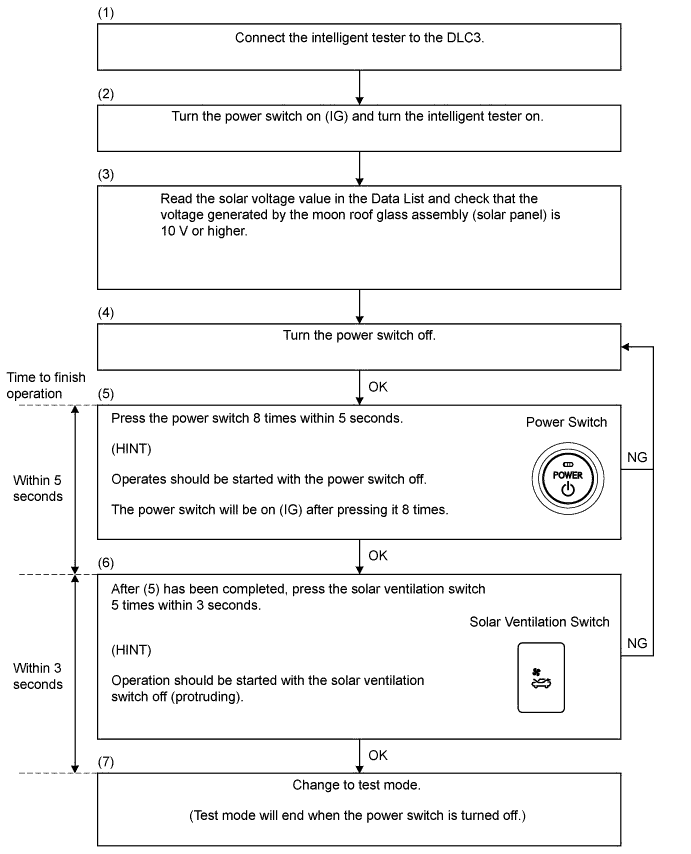SOLAR VENTILATION SYSTEM > OPERATION CHECK |
| SOLAR VENTILATION SYSTEM OPERATION CHECK |
Inspection of Voltage Generated by Moon Roof Glass Assembly (Solar Panel)
Park the vehicle in a location with a stable temperature and a sufficient amount of sunlight, and leave the vehicle as is for approximately 10 minutes.
| Item | Condition |
| Amount of sunlight | A sufficient amount of sunlight is received by the moon roof glass assembly (solar panel). (The amount of sunlight on a cloudless day between 11:00 and 14:00 is typically sufficient for operation.) |
| Moon roof glass assembly (solar panel) status | The moon roof glass assembly (solar panel) is not in the shade |
| No fallen leaves or dirt is present on the moon roof glass assembly (solar panel) | |
| Ambient temperature | 20 to 40°C (68 to 104°F) |
Connect the intelligent tester to the DLC3.
Turn the power switch on (IG).
Turn the intelligent tester on.
Enter the following menus: Body / Air Conditioner / Data List.
| Tester Display | Measurement Item/Range | Normal Condition | Diagnostic Note |
| Solar Voltage | Solar panel voltage / 10V les, 10V-11V, 11V-12V, 12V-13V, 13V-14V, 14V-15V, 15V-16V, 16V-17V, 17V-18V, 18V-19V, 19V-20V, 20V-21V, 21V-22V, 22V-23V or 23V ovr | Actual generated voltage displayed | System operation requirements are met (Click here). |
Operation Check
Check that the Solar Voltage value in the Data List is 10 V or higher.
Turn the solar ventilation switch on.
Turn the power switch off.
Check that the blower motor operates 10 minutes after the power switch is turned off.
| TEST MODE |
Test Mode Procedure
Check that the Solar Voltage value in the Data List is 10 V or higher.
Press the power switch 8 times within 5 seconds.
Press the solar ventilation switch 5 times within 3 seconds.
Check that test mode is activated and the blower motor rotates at a constant speed.
